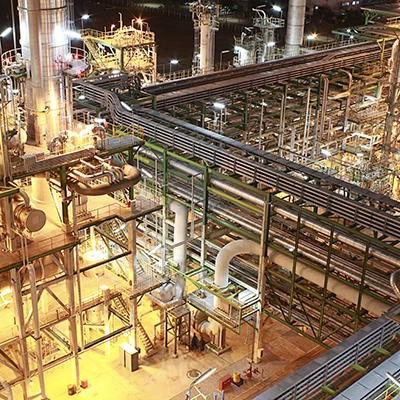To optimize economic output and to meet more stringent environmental regulations, such as the IMO 2020 regulations (< 0.5 wt% S, as compared to the previous 3.5 wt% S standard for HSFO), refiners are looking for new opportunities to upgrade naphtha deprived, heavy residues. Deeper residue processing based on mature solvent deasphalting (SDA) technology become part of the solution.

To deal with the disappearing market for 3.5 wt% HSFO, SDA capacity is combined with hydroprocessing technology to increase heavy vacuum residue (HR) conversion. For example, Axens utilizes an integrated solvent SDA/ebullated-bed hydroprocessing design wherein heavy VR feedstock is initially sent to an SDA unit operated with C4/C5 solvent to achieve a highly deasphalted oil (DAO) yield.
The resulting SDA products, namely asphaltenes and DAO are separately treated in ebullated-bed reactor hydrocracking systems whose design and operating conditions are optimized for a particular feedstock. The resulting net conversion seen with deeper integration of SDA into the refinery process loop greatly improves associated distillate yield. Product qualities are greatly improved relative to treatment of the entire residue feedstock in a conventional fixed-bed hydrocracker.
In effect, SDA, being one of the oldest of refinery upgrading technologies, is playing an important role in the evolution from crude-to-chemicals (vs crude-to-transportation fuels), particularly with the push towards conversion of asphaltenic and residual feedstocks that can be upgraded to supply the large volumes of heavy naphtha production (HN) needed for conversion to high value molecules like paraxylene.
According to a 2018 IEA report, 5.3 million bpd of oil was converted into petrochemicals ranging from aromatics to olefins. The IEA expects 15.6 million bpd of global crude consumption by 2035 for conversion to petrochemicals. Considering that transportation fuels in the global market are growing by only 1% per year, with some bunker fuel markets (e.g., HSFO) rapidly deteriorating, bottom-of-the-barrel upgrading to high value molecules leveraging SDA units can keep refiners in the game.
In fact, deep cracking of residual and asphaltenic feedstocks to high value molecules are achieved with integration of the various proprietary hydrocracking and SDA technologies on the market. At one large Asian refinery, an H-Oil® vacuum resid hydrocracker followed by Solvahl® (a solvent deasphalting unit) is delivering a 90 wt% conversion level, according to information from Axens. The DAO produced from the SDA unit, along with VGO are then sent to a full conversion HyK™ hydrocracking unit for optimal naphtha production required for downstream aromatics production, especially high purity paraxylene.
Apparently, SDA technology, when integrated with other catalytic conversion processes will play a larger role in maximizing naphtha production for chemical yields from naphtha deprived crudes. LS����A







Leave a Reply
You must be logged in to post a comment.